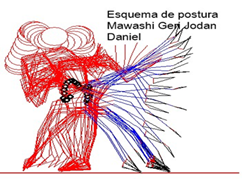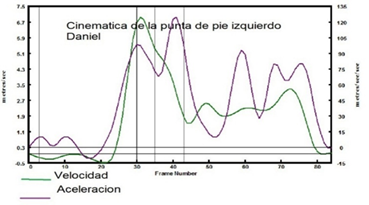Introduction
The inclusion of science as a multisectoral and social event has generated transformations that directly influence the improvement and evolution of results in all spheres contained in the current context. The world is governed by constant change and transformation in search of the optimization of processes that allow satisfying the demanding demands of the general population.
In the field of Physical Culture and Sports, it is essential to quote Sports Biomechanics, a science that aims to prevent injuries that hinder the sports career of athletes and increase the efficiency and productivity of competitors during the training and competition stages.
Palao Andrés (2012), defines it as the interdisciplinary science that studies the behavior of the human body and its relationship with the environments and products with which it interacts from a mechanical perspective.
In relation to this topic, authors such as Peña López, et al. (2021), describe sports biomechanics as the science based on the integration of physical laws and motor actions through video recording, measurement and analysis of movement, it plays a fundamental role in those disciplines of complex reactions such as combat sports including Karate Do.
In other hand, sports scientists and biomechanics are aware of the difficulty of applying biomechanics to the field of training and sports performance, as well as teaching. The qualitative assessments provided are very useful for sports technicians and athletes; but they are limited when it comes to deepening into the knowledge of the technique, its support and scientific foundation (Ferro Sánchez & Floría Martín, 2011).
It should be considered that as athletes, and especially karate fighter, acquire skill and competitive abilities, they automate their techniques and reach a level where the visual correction of small errors and failures that contrasts with maintaining a perfect state becomes extremely complex. psychophysical-mental and achieve that long-awaited medal.
The foregoing is based when Valcárcel Linares & Torres Lacomba (2020), specify that karate, being a sport in which high intensity actions are carried out, with explosive movements of the lower limbs, and with a predominance of techniques fist, requires a detailed study that clarifies and supports the work of specialists and coaches.
It is about resorting to the use of new technologies through computer software that allow to specify and detect defective elements of each technical action that make it impossible to achieve fluidity in attack and counterattack movements, as well as to identify alterations in combat actions that contribute to an unnecessary expenditure of energy affecting the physical condition of the athletes.
This assumes validity in the study by Valdés Cabrera, et al. (2020), where he describes the procedure for the analysis of the Mawashi Geri Jodan considering the biomechanical indicators that guarantee its technical pattern.
Undoubtedly, karate fighter must fulfil a series of indispensably principles that are manifested throughout their sports careers and fundamentally when they face their opponents.
Within this, the speed of anticipation is emphasized, an element defined by authors of the stature of Romero Medina, et al. (1990); Hervás, et al. (2011); and Pinillos Ribalda, et al. (2011), as the speed to perform an advance calculation of the response that must be executed in a situation of uncertainty. Strictly speaking, what is required in the task that is included under this name is that the subject accurately estimate the occurrence of an event, that is, that he anticipates his response with such precision that he manages to intercept a mobile stimulus at a point in time. precise reference.
The following particularities are present in the anticipation speed:
Identification of the stimuli that may be susceptible to a reaction. This ability to perceive events quickly and in detail in complex sports situations is an essential requirement for effective performance in different sports (Williams & Elliott, 1999). According to Granda, et al. (2006), this ability is related to the quality of the visual system or expert knowledge.
Decision on whether the stimulus is due to a situation in which it is necessary to adopt a response, as well as the response that is most convenient according to the perception received (Mori & Shimada, 2013).
Studies conducted by Beneke, et al. (2004), show that during a simulated combat, around 11 to 21 high intensity actions are carried out, each lasting from 1 to 3 seconds.
While in an international combat, 10 to 24 (17 ± 7) actions are carried out with a duration of <1 to 5 seconds. The shortest offensive or defensive action, during a simulated combat, lasts 0.3 ± 0.1 seconds for combats of 2 and 3 minutes; and the longest is 2.1 ± 1.0 seconds and 1.8 ± 0.4 seconds, for bouts of 2 and 3 minutes respectively (Lide, et al., 2008).
Authors such as Chaabène, et al. (2014), whos contribute with studies that show one of the most used techniques during Kumite is the circular kick to the trunk or mawashi-geri chudan and the punch with the upper limb in front, followed by punch with the upper limb behind the face. or kisami kyaku-zuki jodan which turned out to be the most used combination.
However, on very few occasions, specifically 40%, the goal of scoring the point is achieved, this according to the results obtained in a statistical study carried out by (Toro, 2018).
Seen in this way, this research focuses on detecting deficient elements that make it difficult to master the Mawashi Geri technique while the action is being performed.
Materials and methods
The present investigation responds to the qualitative paradigm, a transactional or cross-sectional design model and a descriptive type of study. The athlete was observed in the environment itself where it develops in its natural state. This justifies that the observation classifies within those of the field, because it is in direct contact with the object of study in its real situation.
The research was carried out in the Karate Do team of the University of Cienfuegos that responds to the Biomechanics Project "Biomechanical Studies in High Performance Sports of the Province of Cienfuegos", supervised by the Department of Biomechanics of the Research Center of the Cuban Sports (CIDC).
The team has a population of 6 athletes, of them 3 were men for 50% and 3 women for the other 50%, one of them being intentionally sampled since the coach was of special interest due to his low performance in the last competitions.
Observation
Indirect, laboratory, structured (controlled) and participant. They are used, in specially extended ways with possible auxiliary technical means for observation such as (camera, photographs, video recorder).
The observation was applied to an athlete (Figure 1), object of filming, to later analyze their movements in terms of force, acceleration, variations in joint angles, speed indicators, etc. 3 Nikon brand cameras, a tripod with a level, a 1.00m ribbon, computers and the Hu-m-an 5.0 software were used.
This allowed to know some results of the study; With the information provided by the above-mentioned system, the results and conclusions were finally analyzed.
Results and discussion
In order to find solutions and better organize our work, the technique was divided into three phases that allowed us to individualize and specify at what point in the movement it showed deficiencies.
Initial phase (Fig. 2).
Central phase.
Final phase.
Elements of the technique to observe:
Center of gravity height (m). (Table 1)
Distance between both supports (m). (Table 1)
Execution time of each phase (s). (Table 1)
Relative angles of the elbow joint (º). (Table 2).
Relative angles of the knee joint (º). (Table 2).
Absolute trunk-hip angle (º). (Table 2).
Height of the foot at the moment of impact (m). (Table 2).
Left toe speed (m / s). (Fig. 3).
Table 1 - Phases.
| Phases | Height of the center of gravity (m) | Distance between both supports (m) | Execution time of each phase (s) |
| Phase # 1 | 0.69 | 1.01 | 0 |
| Phase # 2 | 0.85 | - | 0.23 |
| Phase # 3 | 0.85 | - | 0.14 |
Table 2 - Phases.
| Phases | Relative angles of the elbow joint (º). | Relative angles of the knee joint (º). | Absolute trunk-hip angle (º). | ||
| Left | Right | Left | Right | ||
| Phase # 1 | 78 | 71 | 156 | 184 | -175 |
| Phase # 2 | 14 | 45 | 166 | 178 | -128 |
| Phase # 3 | 40 | 47 | 177 | 172 | -110 |
The athlete presents his maximum speed point in frame 32 with 6.9 m / s, at which point the knee is raised to its maximum point. The execution time of the movement until the moment of impact was 0.37 seconds.
Having the necessary data such as the percentage of mass of the striking leg (16 kg) and the acceleration (6.7 m/s2), the force in Newton used in the blow was calculated (Rodríguez Rodríguez, et al., 2012).
F = m × a
F = 16kg × 6.7 m/s2
F = 107.2N The force used was 107.2N.
The preceding analysis shows that, during the execution of the movement until the moment of impact, the athlete gained a time of 0.37s, kicked at a speed of 6.9 m / s, with an acceleration of 6.7 m/s2 and applied a force of 107.2N result that is lower compared to the work carried out by Estevan, et al. (2010), in which they compare the efficiency of the circular kick to the chest and to the face in taekwondo according to the distance of its execution and obtain a result of 0.31s in its execution.
It should be taken into account that the karate fighter under study was shown with a distance between both supports of 1.01m, a value that exceeds the results obtained by Toro (2018), with an average of 0.93m. In this sense, it is essential to note that, the greater the distance between the legs, the longer the execution time. This means that there is a slight deficiency in the initial phase of the movement in which it should be emphasized in terms of shortening distance and increasing speed.
Although it is true that the variable Center of Gravity (C.G) displacement behaved appropriately, increasing as the action progressed, it remains below the levels stipulated by Toro (2018). This aspect is of utmost importance since the arrival of the opponent depends on it.
Finally, one of the most important components that should be referred to is the maximum height of the tip of the foot that carries out the action, in it could be seen that it reaches 1.50m, data that is below its possibilities if It is taken into account that he is 1.70m tall; The need to work hard on flexibility is also stressed, since it depends on achieving objectives such as hitting in areas with higher scores (Jodan); Consequently, it follows that the greater the range at the moment of impact, the greater the chances of marking the point in this area.
Conclusions
In relation to the above, it is concluded that the athlete's time indicator (0.37s) is insufficient compared to previous research Estevan, et al. (2010), (0.31s) this could be the product of an increase in the distance between both supports.
The variable displacement of C.G behaved appropriately: it increased as the action progressed, an aspect of utmost importance since the arrival of the opponent depends on it.
The height reached by the karate fighter's performing leg is below his possibilities, so it is recommended to do a lot of work with flexibility exercises, in order to hit higher scoring areas and overcome the opposite.

















